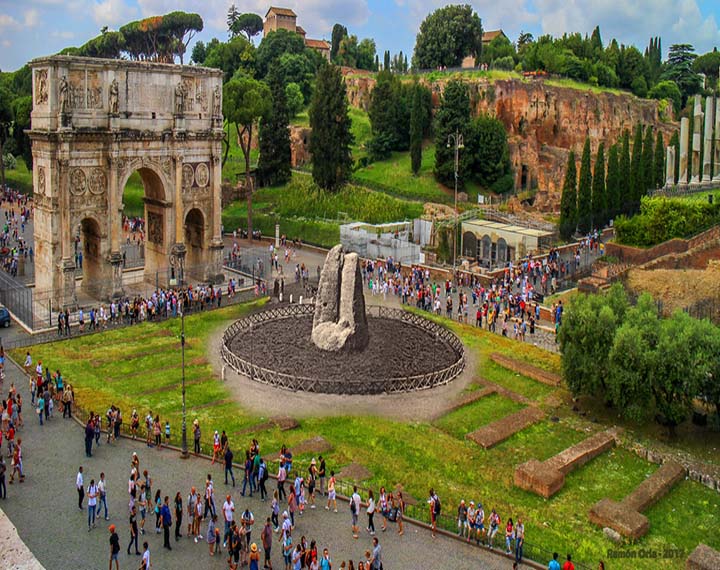
Meta sudans
Today, visitors to the Colosseum area can see the remains of the Meta Sudans’ base and gain an understanding of its historical significance in the context of ancient Roman architecture and urban planning. The Meta Sudans was an ancient Roman monumental fountain located near the Colosseum in Rome. Here are some key details about the Meta Sudans:
- Location: The Meta Sudans was situated just southeast of the Colosseum, adjacent to the Arch of Constantine and near the Meta Romuli.
- Architectural Form: The structure was essentially a large conical fountain, with the word “meta” referring to its conical or meta-shaped structure, and “sudans” meaning “sweating” or “oozing” in Latin. The name indicates its function as a fountain.
- Purpose: The Meta Sudans served as a monumental fountain that provided water for public use. It was a prominent feature in the urban landscape and contributed to the aesthetic appeal of the area around the Colosseum.
- Design: The fountain had a conical base with a cylindrical column rising from its center. Water likely cascaded down the sides of the cone, creating a visually striking and cooling effect.
- Symbolism: The Meta Sudans was not only a practical source of water but also held symbolic significance. It was part of the broader urban design and artistic elements of ancient Rome, contributing to the city’s grandeur.
- Historical Significance: The Meta Sudans was constructed in the early 3rd century during the reign of the Roman Emperor Domitian. It stood as a landmark for many centuries, witnessing various historical events.
- Destruction: Unfortunately, like many ancient structures, the Meta Sudans did not survive the test of time. It was dismantled in the early 20th century as part of the larger efforts to clear the area around the Colosseum and the Roman Forum for archaeological purposes.


